


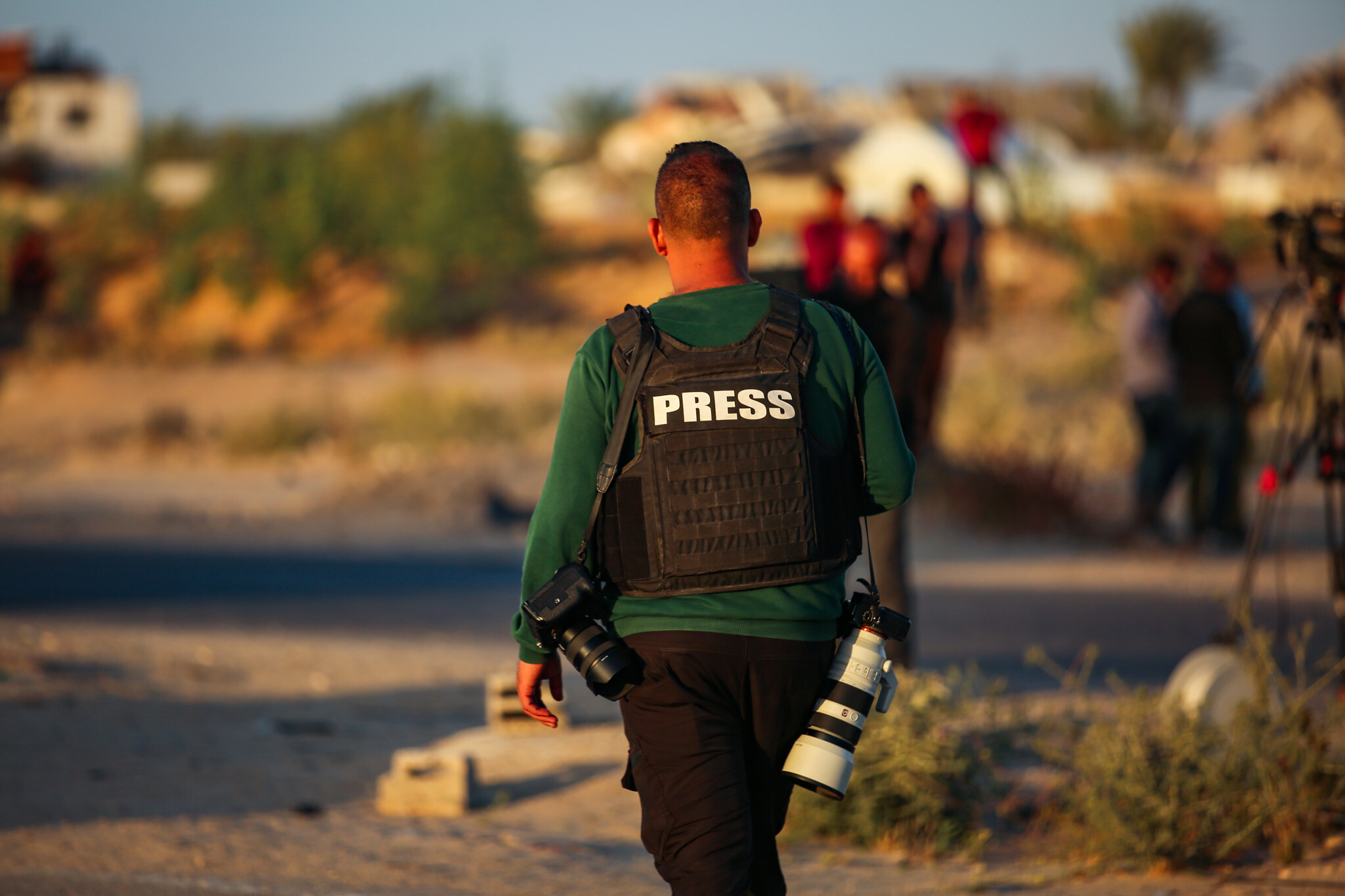
Israel’s High Court on Sunday abruptly postponed a long-awaited May 21 hearing on a petition for independent press access to Gaza, providing neither a reason nor a new date.
The delay marked the latest of a series of postponements over a petition filed by the Foreign Press Association, which represents international journalists working in Israel and the Palestinian territories, and came as Israel stepped up its offensive in the Strip.
The FPA is attempting to challenge the Israeli military’s near-total ban on foreign press entering Gaza following Hamas’s October 7, 2023, attack.
Since then, Israel has sealed the Strip to civilians, permitting access only to journalists already inside — mostly local freelancers — or those escorted by the military under strict supervision.
The result, critics say, is that independent reporting on the conflict is nearly impossible, with those in Gaza constricted by Hamas and those escorted by the army only allowed in locations approved by the military, where they have no access to Gazan civilians.
“For a conflict of such global importance and interest, the unprecedented restrictions placed on journalists have made it very difficult to report,” FPA chairman Tania Kraemer told The Times of Israel. “As journalists, it is our job to be on the ground, even if it is dangerous.”
When asked for comment, the IDF said security threats require any press entering the Strip to do so with military oversight. Foreign and Israeli journalists wishing to enter Gaza can submit requests, but replies could be delayed depending on the security situation, the army said.
As of late March, the IDF reported facilitating 308 media trips for Israeli journalists across all fronts — including Gaza, Lebanon and Syria — since the war began, typically hosting groups of two to 20 reporters at a time.
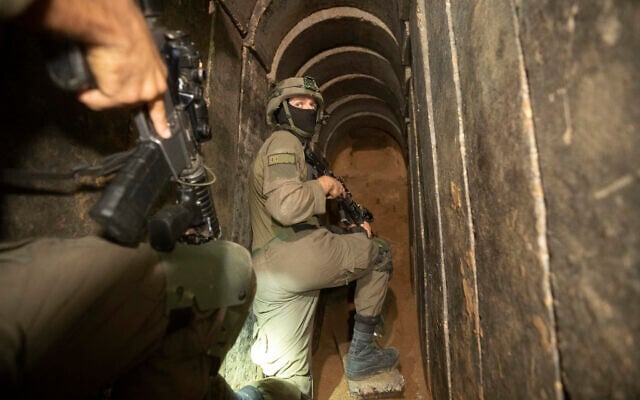
In contrast, only 36 trips embedded with soldiers were granted to foreign media, nearly all of them in larger groups of around 20 and primarily within Gaza.
Military embeds “are not a substitute for independent access to Gaza,” Kraemer said.
The visits are highly controlled, limited in scope and time, and journalists are not able to interview Palestinian residents of Gaza, she noted
The FPA, which represents some 350 journalists in Israel and the Palestinian territories, has been engaged in a prolonged legal effort to secure independent access for reporters to Gaza.
In December 2023, the FPA petitioned the High Court to open a border crossing into the Strip for non-Israeli journalists. The court rejected the petition the following month, citing the security of IDF soldiers as the primary reason, and also argued that allowing foreign press access would place an undue burden on military resources during wartime.
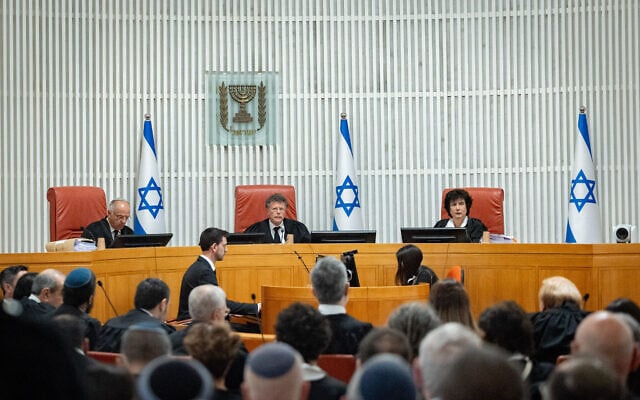
However, Kraemer noted that the court indicated the FPA could submit a new petition should circumstances change.
The FPA filed a new petition in September as the military campaign appeared to largely slacken, but with Sunday’s postponement, the court has now given the government six extensions to respond, Kraemer said.
Kraemer declined to share further details about the case, citing legal constraints ahead of the court hearing. She expressed hope that the hearing would finally proceed as scheduled, despite uncertainty about when that might happen.
The ban on entry remained in place during the two-month ceasefire that began in January. At the time, the FPA publicly appealed for access, to no avail.
“With a ceasefire now in place and military activity scaled back, there is no justification for any further delay in granting access,” the association said.
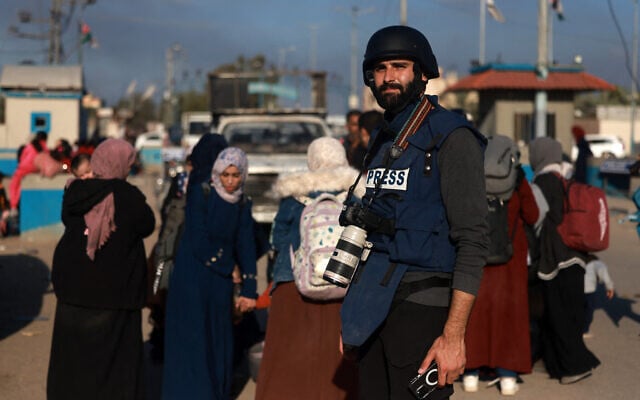
Fighting resumed in March, but remained at a relatively low simmer until Friday, when the IDF announced that it launched the initial stages of a major offensive in the Gaza Strip, dubbed “Gideon’s Chariots,” that will seek to “seize strategic areas” of the Hamas-run Strip.
Authorities reported dozens killed in heavy Israeli airstrikes overnight and on Saturday morning, though the toll could not be verified and did not differentiate between civilians and fighters.
Palestinian media reported on Saturday that IDF ground troops had advanced overnight toward central Gaza’s Deir al-Balah, with heavy artillery fire and airstrikes toward the eastern part of the city.
Journalists covering Gaza could only repeat what Palestinians were reporting, due to the press restrictions.
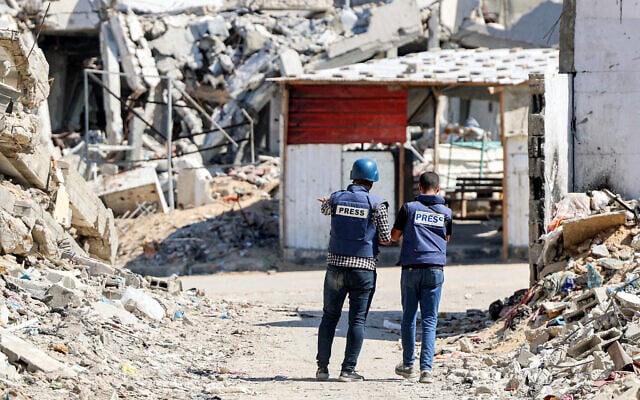
“Independent, first-hand reporting is important in covering a war of this scale and international implications,” said Kraemer. “Those who support Israel have repeatedly cast doubt on the reporting of Palestinian journalists, accusing them of bias — so… Israel’s supporters should welcome an independent international press corps in Gaza to investigate claims and counterclaims.”
Kraemer said the demands for independent access were not meant as a knock against “the tremendous work being done by our Palestinian colleagues inside Gaza,” who she claimed “brave great danger and extreme hardship to deliver their stories every day.”
Since Hamas’s October 7 onslaught, at least 178 journalists and media workers have been killed in the Palestinian territories, according to the Committee to Protect Journalists, a nonprofit dedicated to press freedom. Citing the alarmingly high death toll, Reporters Without Borders named the Palestinian territories the most dangerous place in the world for journalists.

Israel, for its part, has long claimed that many of those listed as journalists are actually terror operatives in Gaza using journalistic cover to shield their activities, in some cases publishing documents to back up the claim.
In March, the IDF reported it had carried out strikes that killed “several terrorists, including terrorists who were operating under the guise of journalists.” Earlier this month, an Israeli airstrike killed Hassan Eslaiah, a photographer who entered Israel on October 7 and whose photos were distributed by Western news outlets, including The Associated Press, but whom the IDF accused of being a Hamas operative. On Sunday, the military released documents it claimed proved Eslaiah was a member of Hamas’s military wing.
The army has denied targeting journalists not involved in terror activity and says it takes steps to reduce harm to uninvolved civilians when carrying out strikes.
In RSF’s 2025 World Press Freedom Index, the Palestinian territories ranked 163rd out of 180 countries, due to reporters facing threats from both Israeli forces and local authorities — Hamas in Gaza and the Palestinian Authority in the West Bank. RSF alleges these challenges contribute to a shrinking space for independent journalism throughout the region.
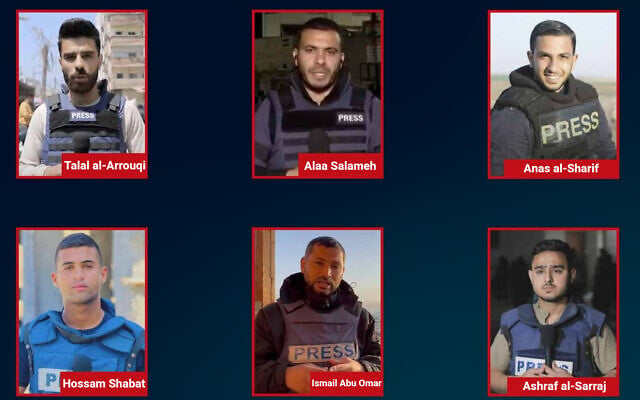
Meanwhile, Israel’s press freedom record has also come under increasing strain. Israel ranked 112th in RSF’s ranking, down from its ranking last year at 101st, with concerns raised over political interference, harassment of journalists, and — most notably — military censorship.
According to +972 Magazine, a left-wing Israeli news outlet that has tracked the military censor’s data since 2011, the censor fully barred the publication of 1,635 articles over the past year, along with 6,265 partially redacted items, reflecting a notable rise compared to previous years.
Haggai Matar, the magazine’s executive director, told The Times of Israel that an even bigger issue was the voluntary withholding or softening of Gaza coverage.
Many Israeli outlets self-censor content to align with prevailing national sentiment or avoid public backlash, he alleged, rendering topics such as alleged systemic starvation, IDF bombings and the killing of innocent civilians effectively taboo.
While military censorship is a serious issue that warrants attention, “it’s not something that prevents Israeli journalists from telling the Israeli public what’s happening in Gaza.”
